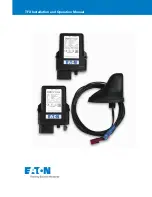2
GENERAL DESCRIPTION
The EMCO Model 3141 is the latest evolution in the popular bow-tie/log periodic
combination BiConiLog
TM
family. A biconilog antenna combines a broadband biconical-
like bow-tie antenna with a standard log periodic to replace the traditional use of two
antennas in the 30-1000 MHz EMC test frequencies. Many EMC antennas are variations
of a standard tuned dipole. For any dipole-type antenna to transmit or receive energy
most efficiently, its length must be nearly a half wavelength, which is about 4.6 meters
long at 30 MHz, and 2.8 meters long at 50 MHz. Unfortunately, this is too unwieldy for
many anechoic chambers and test sites. The end plates of the Model 3141 T bow-ties
make it look like an antenna twice as long as its 1.4 meter length. The result is about a
10 dB improvement in low-frequency transmit gain and receive antenna factor compared
to a same-length regular bow-tie.
Although bow-ties have been used for all elements on log-periodic antennas in the
past, in EMC applications the advantage gained is an extension of the useful low
frequency range of the typical LPDA's from 100 MHz down to 30 MHz. At 30 MHz, an
efficient single dipole type antenna must be 5 meters long, whereas suitable performance
is obtained here with less than a 1.4 meter long bow-tie. A simple wire outline bow-tie
antenna is narrowband compared to a sheet bow-tie or biconical, thus struts are added to
the Model 3141 bow-ties to better simulate the broadband sheet bow-tie. The standard
"self-balun" feed of the log-periodic also provides a matched, balanced feed to the bow-
tie elements. To prevent cable pickup below 100 MHz, the Model 3141 contains a
"balun" which acts as a common-mode choke to keep unbalanced current off the coaxial
feed cable outer shield. Even though the Model 3141 is highly balanced (sy/-
Archived 3/18/10


















